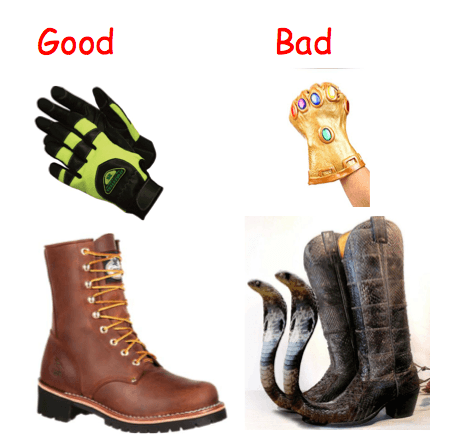Danger never takes a vacation:
Why does it matter what kind of gloves you wear?
- For one thing, you’re holding a tool that’s running at 11,000 RPM which means that there is potential for a ton of vibration that’s transferred to your hands and forearms. This may lead to numbness of your hands and fatigue on your arms and shoulders.
- Plus, you’re working with an extremely sharp chain traveling at 55 MPH.
What are some characteristics of a good pair of gloves?
- Gel padding in the palms to drastically reduce vibration.
- Lined with cut-resistant DuPont Kevlar fiber to prevent minor cuts. They should be rated at Level 3 for cut resistance. (ANSI/ISEA 105-2005 Standard.
- Snug fit. Get the right size to fit your hands.
- Non-slip with breathable Spandex with goatskin or other materials that provide good control for your fingers and palms. Make sure the top of the glove is well made.
- Knit wrist closure with Velcro keeps debris out and doesn’t get caught in things like chippers, saw tips, or sticks.
- Machine washable if possible.
- Why worry about boots?
- You are on your feet for more than eight hours a day. Your ability to work efficiently is directly proportional to your foot comfort.
- Protecting your feet in rough conditions should be a high priority.
What are characteristics of a good boot?
- Correctly fitted to the size of your foot.
- Lined with DuPont Kevlar for chain cut resistance (24m/sec chainsaw speed)
- High abrasion resistance.
- Steel shank for support.
- Moisture repellent upper.
- Pillow cushion inserts.
- Steel, titanium or plastic toed boots. Titanium and plastic toed boots reduce the overall weight of the boot.
- Meets OSHA regulation 1910.260, ANSI Standard Z41PT83, ASTM F2413-2011 CAN/CSA Z195-2009
Why you should wear a hard hat cutting down a tree
We are done with PPE!
Latest posts by Brian Maddy (see all)
- Oil and Fuel - January 31, 2017
- The Bar - January 24, 2017
- Sharpening Tips - January 17, 2017
